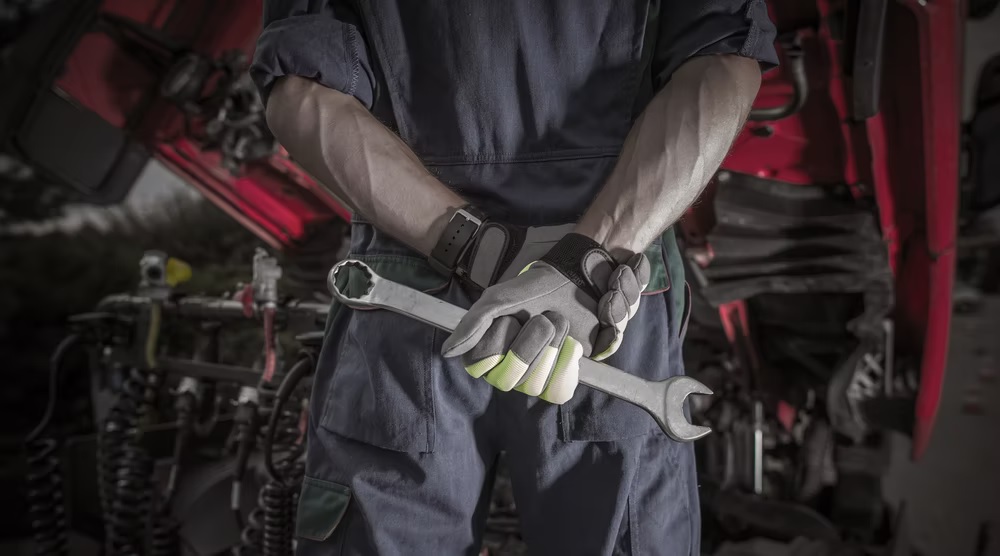Technicians deal with these decisions all the time: Rebuild complex assemblies—work that costs a lot of time and money—or simply replace them, which often comes with a smaller price tag and less effort. The tech shortage has only magnified this issue.
Truck drivers traverse tens of thousands of miles each year. Routine maintenance is so important to keeping their equipment running properly and safely—especially as it ages. Additionally, a shortage of new equipment has increased the pressure on fleet managers to get even more mileage out of their current assets.
The shortage of service technicians is a problem facing our industry today. According to the Bureau of Labor Statistics, demand for heavy-duty truck service technicians and mechanics is expected to grow 8% between 2020 and 2030, translating to an additional 28,000 positions projected to be needed each year for this decade. The labor shortage among commercial vehicle technicians has created a need for the existing workforce to work faster and more efficiently to maintain trucks and trailers.
See also: Increase in electronics drives need for diagnostic tools
The tech shortage has affected how OEMs and suppliers produce trucks, trailers, and parts. To increase vehicle uptime and expedite service, manufacturers improve designs and provide solutions to service them quickly when needed. One such solution is providing full part replacement options that will require less hours, less tech time, less specialization, and less overall cost.
The concept of replacement instead of rebuilding is not new. An example of this would be moving away from rebuilding a starter or alternator years ago to a complete replacement, which today is standard shop practice. The question we should continue to ask is what else makes sense?
Servicing a wheel end when bearings need replacement is a strenuous task and requires several steps, including lifting the axle and removing the tire and brake systems. With disc brake systems continuing to grow, this process is becoming even more time-consuming and costly. Ensuring that the service on the wheel end is performed correctly is essential.
When considering value, the cost to rebuild a wheel end and the labor required to do so is more than a complete new assembly. Factoring in downtime of the equipment only magnifies the savings when choosing to replace. The two-hour time savings to replace also increases shop throughput, allowing the service bay to attend to more vehicles and capture more opportunity revenue.
Rebuilding a wheel end also comes with the potential for damage or assembly error. Technicians may damage the casting or bearings when “knocking out” the old bearing cups and “pressing in” the new bearing cups. For aluminum wheel ends specifically, technicians may not realize the service procedures to remove the bearing cups that require a welder, or the installation of the new cups that require heating the wheel end and freezing the cups prior to reassembly, or that seal installation can be done incorrectly, which can result in costly additional repair and U.S. Department of Transportation fines.
If a wheel end is rebuilt correctly, only the new components are replaced, typically the bearings and seal. The remaining used components can present wear leading to limited performance and reduced overall life. Some examples would be worn wheel/drum pilots on the casting that can cause improper wheel mounting, elongated/rusted wheel studs that could fracture, or a corroded ABS ring that could result in faulty signals to the ABS system.
Going a step further, a preadjusted wheel end can replace a conventional wheel end, adding more value to the service shop and fleet. Since the preadjusted wheel end comes completely assembled, including bearings and seals straight from the factory, the correct assembly of components into the wheel end assembly is ensured. By simply sliding the wheel end onto the spindle and torqueing the spindle nut to the recommended amount, the technician avoids the eight-step bearing adjustment procedure, including measuring the final endplay.
Fortunately, the rebuild trend is fading as fleets embrace replaceable parts. Replacing the entire hub ensures quality, consistency, and the same OEM genuine product with the precise required tolerances. Moreover, hub manufacturers offer robust warranties to further encourage the adoption of replacing hubs. Conversely, warranties of the individual parts in a hub rebuild rarely exceed one year, and it is only for the parts themselves.
The ongoing maintenance tech shortage underscores how important replacing products is compared to rebuilding them. If you have better-quality products that rarely break down, you don’t need as many technicians. Likewise, fleet managers will either need fewer technicians if they can service tractors and trailers more efficiently, or the existing crew can service more vehicles in the same amount of time.
Brian Rieger is the vice president of North America Truck OEM and Aftermarket Sales at ConMet.
By Brian Rieger
Source: https://www.fleetowner.com/




